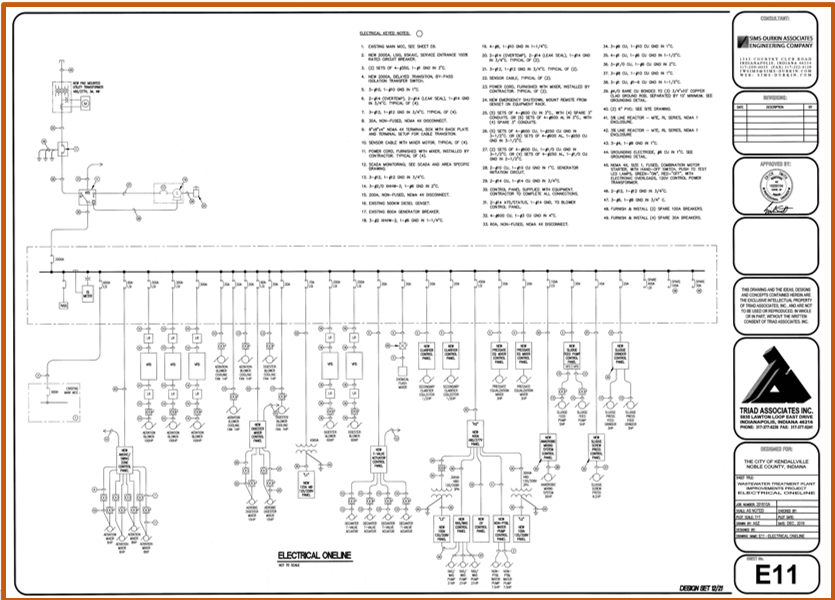Learn
What should your Electrical drawing contain?
Posted on
August 16, 2023
in

An electrical one-line diagram is an important document that provides a visual representation of an electrical system and allows facilities to operate smoothly and limit their downtime. Here are the typical components that should be included in an electrical one-line drawing:
- Power sources: Electrical sources that power the system, such as utility services generators.
- Protective devices: Phase and ground circuit breakers, relays, fuses, and other protective devices that are used to safeguard the system from overloads, short circuits, and other types of electrical faults.
- Distribution equipment: Switchgear, panels, and transformers that are used to control and distribute power throughout the system.
- Electrical Loads: Three-phase loads, such as motors, lighting, HVAC systems, and their associated circuits.
- Cable and Conduit: Conductor types, sizes, and quantities per phase
- Interlocks: This includes interlocks that help to indicate the mode of operation
Overall, an electrical one-line drawing should provide a clear and concise representation of the major components of the electrical system or circuit, as well as the interconnections between them. This helps to ensure that the system is installed, operated, and maintained in a safe and efficient manner.
If you want to learn more about Electrical One Line drawings and the importance they have on your facility, read our white paper “Why, What, When, and Who of Electrical Maintenance“.
Tags: Electrical Contractors




